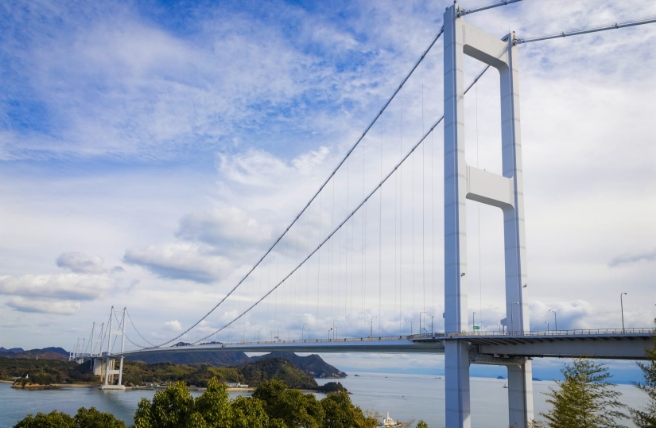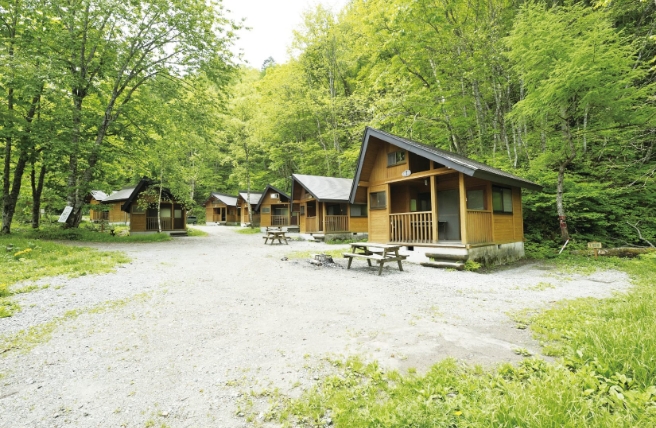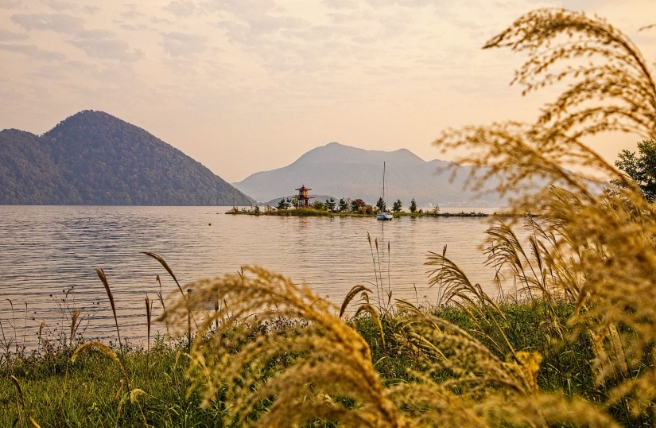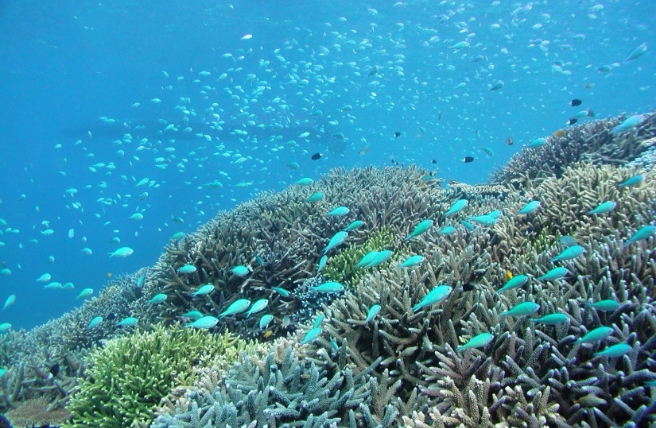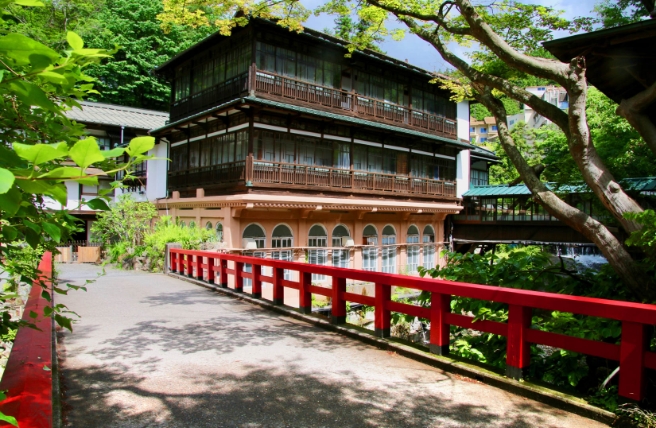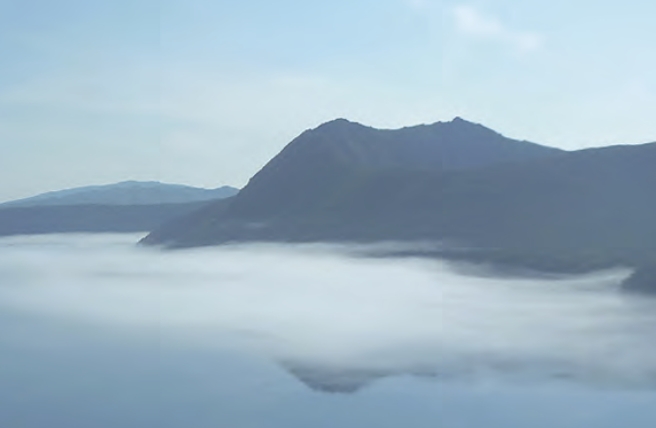Mitake-Shosenkyo Gorge
Hike this gorge between imposing cliffs and crags that reach up to 180 meters in height and admire the stunning stretch of the Sengataki Falls. About 10 minutes’ walk north of the waterfall is Sengataki Station of the Shosenkyo Ropeway. This cable car will take you to the Panorama-dai Observation Station on Mount Rakanji. On clear days you’ll be able to see as far as Mount Fuji. Mitake-Shosenkyo Gorge is a 30-minute bus ride from Kofu City.
Mount Kimpu
Hiking to the top of Mount Kimpu (2,599 m) takes from three to five hours. There are some large boulders to climb, but most are fitted with ropes to assist your ascent. There are also narrow ridges with steep drops and breathtaking views. The rocky peak allows for unobstructed 360-degree views over much of the national park and beyond, with most of Mount Fuji clearly visible.
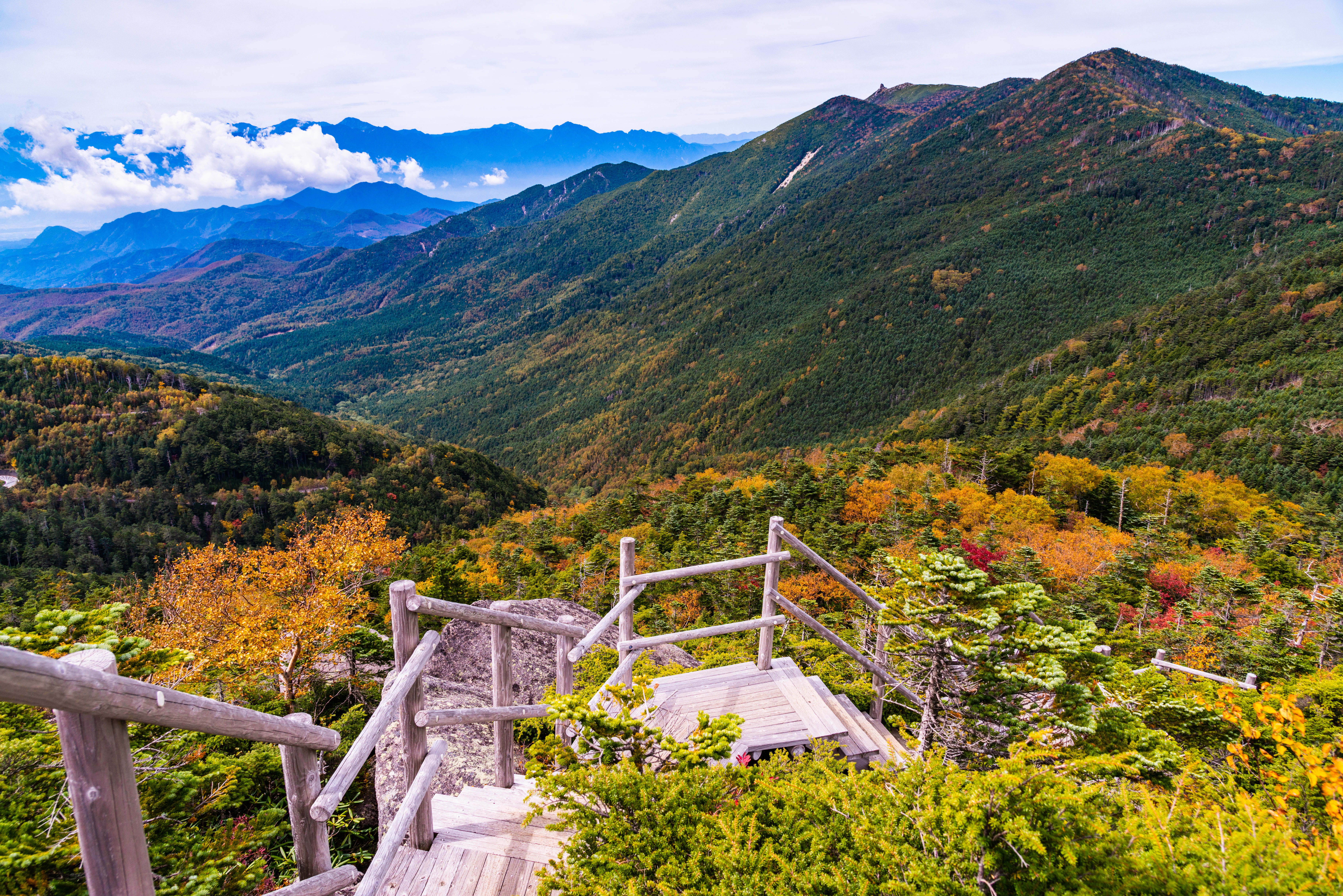
Yume-no-teien Garden
Mount Kita-Okusenjo and Yume-no-Teien Garden
Mount Kita-Okusenjo (2,601 m) is the highest peak in the park. There is an area known as Yume-no-Teien garden near the peak. Although not actually a garden, Yume-no-Teien’s intriguing combination of rocks, trees and moss resembles an outdoor art installation. A road passes close to a mountain hut that sits about an hour’s hike from the peak, so you can drive closer to the mountain during the snow-free season of June to November. Limited parking is available at Oodarumi Parking Lot.
Nishizawa Gorge
This rocky river gorge is home to several waterfalls. The largest is five-tiered Nanatsugama-Godan-no-Taki Falls, about a two-hour hike away. An easier trail leads from those falls to Nishizawa keikoku iriguchi bus stop, which serves as both the start and finish point for this hike. Buses run between here and the center of Yamanashi City, with a one-way journey taking about an hour.
The primeval forests in this valley are excellent for forest bathing. This practice originated in Japan, and involves relaxing in a wooded location to improve your health. Nishizawa is one of only a handful of areas to have qualified for forest therapy status. Many requirements must be met to receive this certification, including easy access and a high concentration of phytoncides, which are said to have natural healing properties. Phytoncides are naturally released into the air by trees.
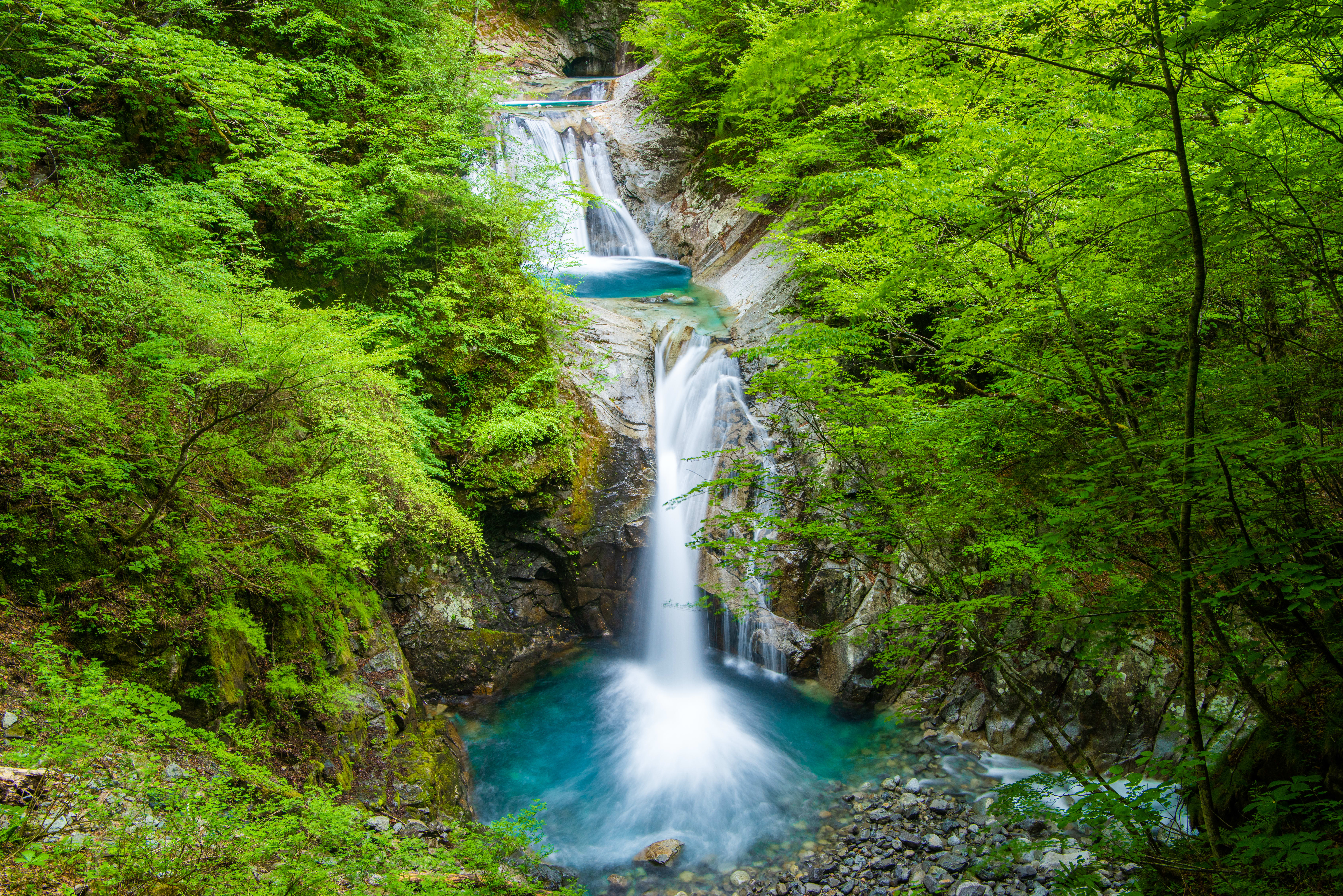
Nishizawa Gorge
Lake Okutama
Lake Okutama is actually a huge reservoir, built to supply an expanding Tokyo with fresh drinking water. The lake’s shoreline comes alive with cherry blossoms between late March and April, and the fiery hues of fall appear during the first half of November. The Mukashi Michi Hiking Trail goes from Okutama Station to the lake, and takes about four hours to complete. A bus that runs between the lake and Okutama Station takes around 15 minutes each way.
Mount Mitake and Hatonosu Canyon
On the east side of the park is Mount Mitake (929 m), which you can reach from central Tokyo in about three hours by taking a train to Mitake Station and then a bus to the lower station of Mitake’s cable car. This largely unspoiled mountain offers easy hiking routes, several waterfalls and a culturally important shrine, Musashi-Mitake, said to have been founded over two millennia ago. The shrine is dedicated to wolves and associated with a legendary warrior prince known as Yamato Takeru.
Three stops further west from Mitake Station is Hatonosu Canyon, full of jagged rocks, small waterfalls and old-growth forest. At the top of this canyon you’ll find Shiromaru Dam, home to one of the longest fish ladders in Japan. This 300-meter tunnel is an ecofriendly measure designed to assist trout in their journey upstream to breed. You can enter the tunnel for free (and don’t have to swim).
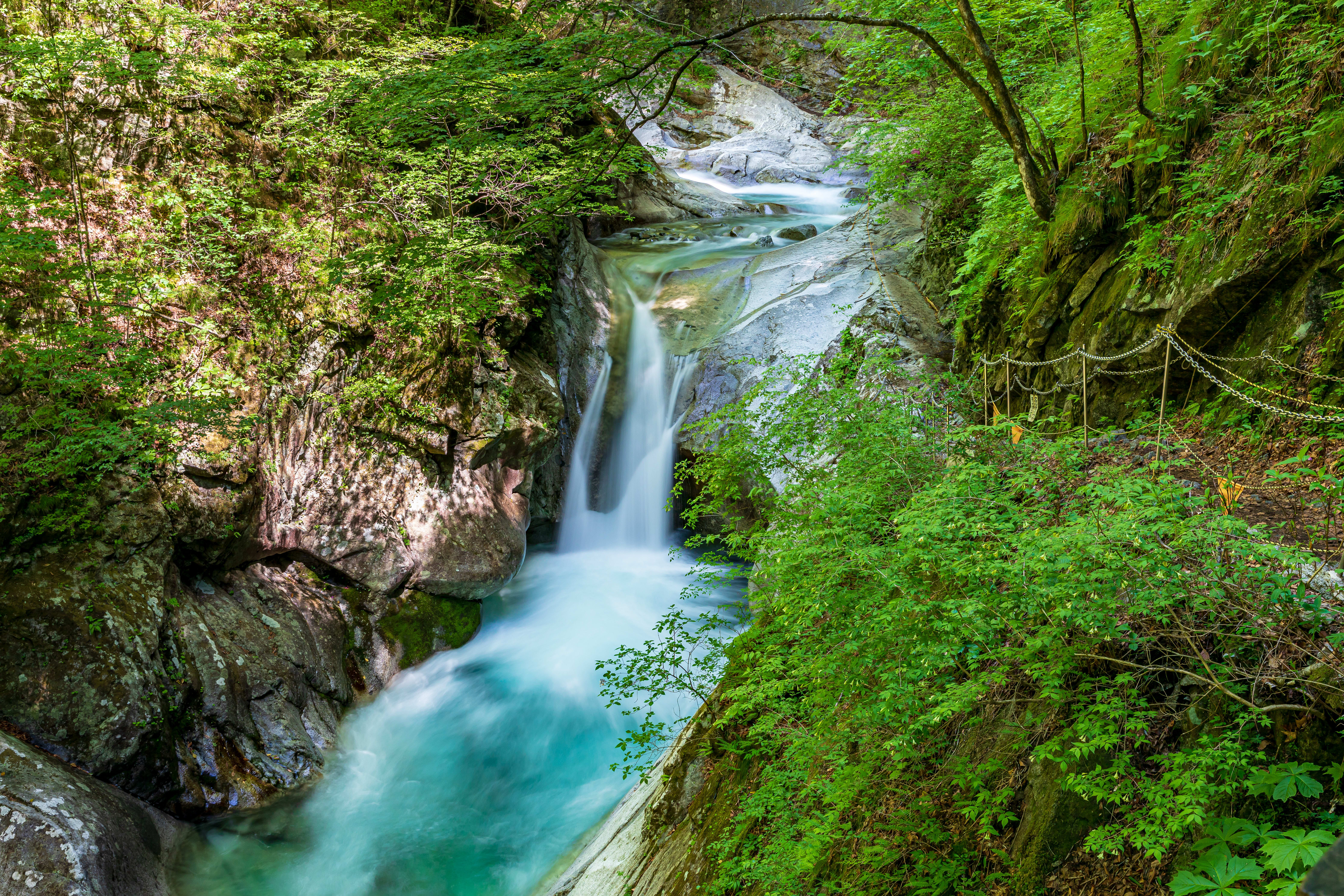
Hatonosu Canyon
Culture
Some of the park’s hiking routes follow mountain passes that originally connected otherwise isolated villages. Musashi-Mitake-jinja Shrine is located on one of these moutain routes. The shrine presents "kagura," traditional Shinto dance performances passed down through more than 30 generations. These dances are only performed between June and November. This area is also a good place to enjoy the ancient Japanese ascetic ritual of "takigyo"—standing under a waterfall to purify the mind, body and soul.

